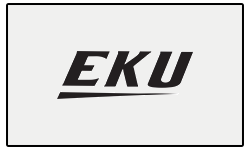Optimizing Orthopedic Operative Notes: A Closed-Loop Audit and Interventional Approach for Improved Practices
Abstract
Asma Burney, Saba Zafar Jawed, Leenah Fatima, Ammara Fatima and Badaruddin Sahito
Maintaining accurate and clear medical records is crucial for effective patient care. These records, detailing a patient's evaluation, management plan, surgical procedures, and post-operative instructions facilitate a seamless communication and care during the initial postoperative phase. The Royal College of Surgeons issued Good Surgical Practices guidelines in 2008 and updated them in 2014, setting parameters for operative notes. This audit aimed to evaluate handwritten operative note-keeping practices in Orthopedic Unit I at Dr. Ruth K.M. Pfau Civil Hospital Karachi in comparison to these established guidelines.
The audit was conducted in two cycles between March and June 2023. In each cycle, 58 operative notes were evaluated against Good Surgical Practices (RCS) guidelines using a predefined form. After the initial audit, a meeting with the department team highlighted findings, stressed the importance of accurate operative notes, and introduced a new RCS-compliant format approved for implementation. Surgeons adapted to the new format during a 2-week period, followed by the second phase of the re-audit. The results were shared within the department to ensure ongoing improvement.
In the initial audit, compliance with the RCS guidelines was observed at 40.7%. After implementing the new note format, significant enhancements were noted in 20 out of 22 parameters, resulting in an overall compliance rate of 64.8% and an improvement of 24.1%. Significant improvements were observed in recording patient identification, prosthesis details, antibiotic prophylaxis, surgical complications, incision name, theater anesthetist's name, and anticipated blood loss. However, documentation of 'any additional procedures performed and the reason why' and 'DVT prophylaxis' showed minimal to no improvement.
The survey reveals notable gaps in orthopedic operative note documentation, emphasizing the limitations of traditional handwritten notes and a lack of adherence to operative notes guidelines. Rectifying this is crucial for optimal patient care, maintaining precise records, and minimizing legal risks.



